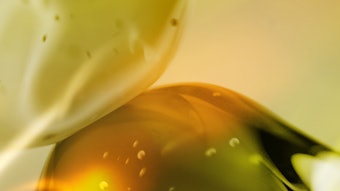In the right hands, some of the most interesting fragrance materials behave like chameleons, adapting from category to category, bringing variable hedonic and performative qualities to different applications. While they can’t always be spotted, these ingredients create surprising synergies in fragrance formulas. During a wide-ranging discussion at Symrise’s New York creative studio, consumer product perfumer Dirk Braun and household perfumer Gregory Weiss talk about their formulation techniques and favored materials.
This high-impact material, in the vein of methyl anthranilate (CAS# 134-20-3; FEMA# 2682), imparts a white fl oral scent without coloration or stability issues, making it an ideal material for the challenging bases Braun and Weiss face every day, including beauty, home and fabric care applications. Braun notes that, compared to fi ne fragrance perfumers, household and beauty care perfumers deal much more with strength, stability and pricing issues, in addition to hedonic quality. “We deal with very diffi cult bases,” he says, “and the fragrance level is often much lower than in a fi ne fragrance. So you need materials that are really performative … good value for money.” Enter Nerolione.
“It’s a very low-threshold material,” Braun explains. “So even at 1.0% solution—a few grams per thousand—you can get really great effects. My expertise is beauty care: shampoos, body care, antiperspirants/deodorants. I use Nerolione a lot for the ‘bloom’ out of the water because right now everybody’s trying to get very performative fragrances. When you use the shampoo in the shower you really need this bloom and room impact.”










